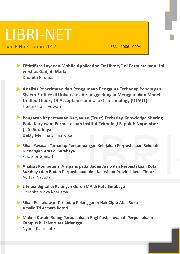Dental Journal (Majalah Kedokteran Gigi)
ISSN 1978-3728
Vol. 45 / No. 2 / Published : 2012-06
Order : 8, and page :97 - 100
Related with : Scholar Yahoo! Bing
Original Article :
Cytotoxicity of betel leaf (piper betel l.) against primary culture of chicken embryo fibroblast and its effects on the production of proinflammatory cytokines by human peripheral blood mononuclear cells
Author :
- Suprapto Ma’at*1
- Department of Clinical Pathology, Faculty of Medicine, Airlangga University, Surabaya - Indonesia
Abstract :
Background: Betel leaf (Piper betel L.) has been used in modern and traditional medicine as antiseptic, antibacterial, and also prevention of plaque accumulation, but it still can stimulate cancer in lime-piper betel quid. Betel leaf also has anti-inflammatory properties. Purpose: To examine the cytotoxicity of betel leaf extract (BLE) against primary culture of chicken embryo fibroblast and its effects on the production of proinflammatory cytokines by peripheral blood mononuclear cells (PBMC) stimulated with LPS. Metode: MTT assay was used to investigate the survival rate of the culture with the survival rate result of the given culture extract4%, 2% and 1% about 82%, 83.4% and 85%. There was no significant difference between treatment with various concentrations of the extract and the control (p > 0.05). To evaluate the effect of betel leaf extracts on the production of cytokines, proinflammatory was conducted by incubating the extracts of betel leaf with peripheral blood mononuclear cells stimulated with lipopolysaccharide. Peripheral blood mononuclear cells were obtained from healthy volunteers isolated by density centrifugation method using Ficoll- Hypaque. Once coupled with various concentrations of betel leaf extract and lipopolysaccharide, and then incubated for 24 hours, the culture supernatant was used to determine the level of IFN-γ and TNF-α by ELISA method. Results: It is known that the survival rates of BLE 4%, 2% and 1% were 82%, 83.4% and 85%. There was no significant of difference between several concentrations of BLE and those in the control group (p > 0.05). The production of IFN-γ and TNF-α stimulated with LPS was no significant difference between BLE 4%, 2% and 1% and that in the control group (p > 0.05). Conclusion: It can be concluded that BLE is not toxic against primary culture of chicken embryo fibroblast, and the production of IFN-γ and TNF-α by PBMC was not affected by BLE.
Keyword :
Betel leaf extract, MTT assay, proinflammatory cytokines,
References :
Apriasari ML,(2011) Sensitivity difference of Streptococcus viridans on 35% Piper betle linn extract and 10% povidone iodine towards recurrunt apthous stomatitis Surabaya : Dental Journal (Majalah Kedokteran Gigi)
Archive Article
| Cover Media | Content |
|---|---|
 Volume : 45 / No. : 2 / Pub. : 2012-06 |
|












